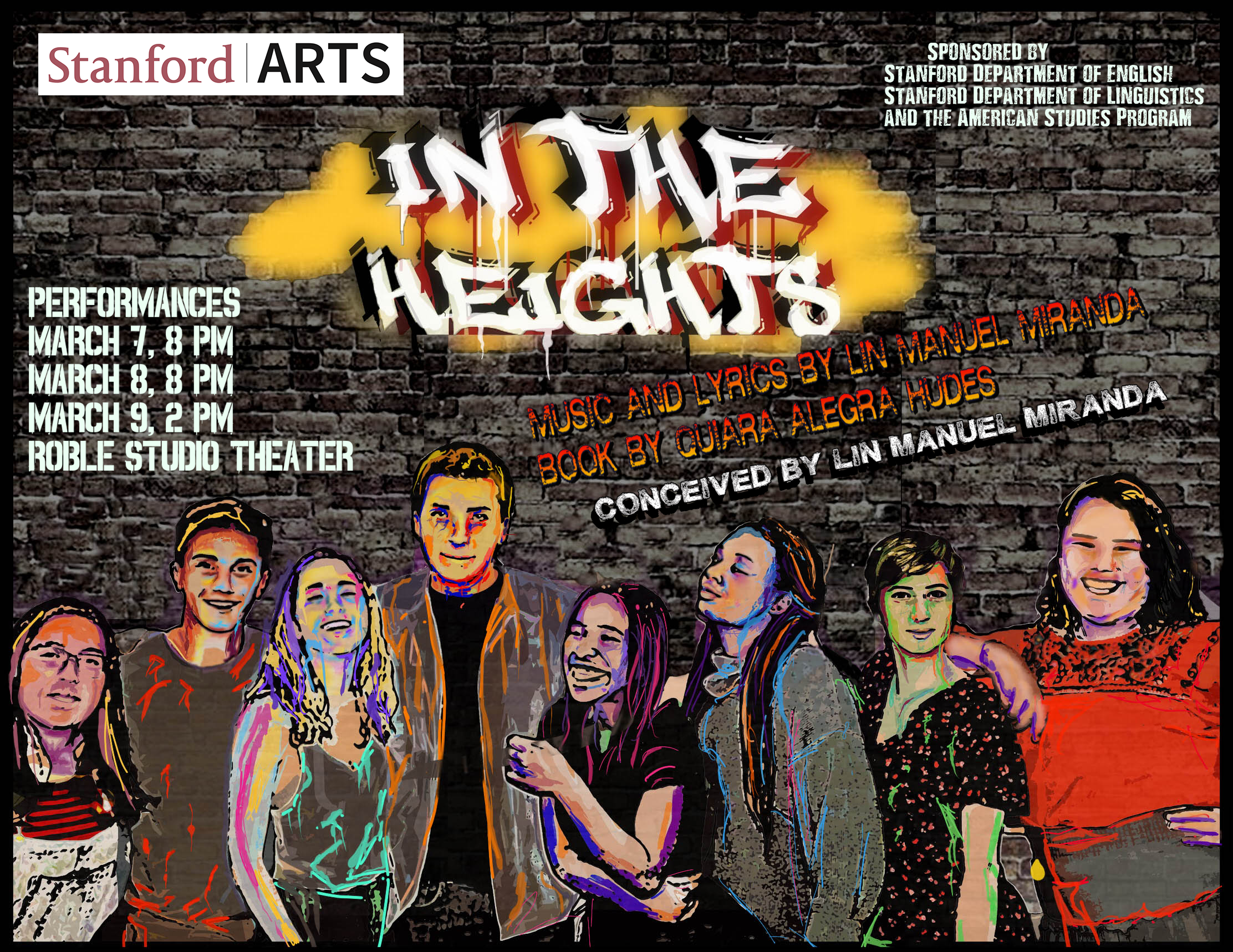Aitan Grossman (‘19) became involved with Latinxs in Theater, the Asian-American Theatre Project and Blackstage’s production of Broadway breakout hit “In the Heights” (2008) thanks to a chance conversation over Thanksgiving dinner. When his friend, “In the Heights” producer Dan Holland (‘19), discussed his artistic vision for the show and the need for good music directing, Aitan recalls having the “spontaneous idea to apply for the position of music director.” A Fleet Street alum, lifelong pianist and self-proclaimed thespian, Aitan has often mixed his music and theater backgrounds while at Stanford, but he had never conducted. When Holland asked Aitan to sit in for the music portions of the cast auditions late fall quarter, Aitan found himself deeply moved by the stories and singing of auditioning students. Watching a small SF theater production of “In the Heights” following the auditions made him enthusiastic about working with Holland, whose artistic vision is to showcase the musical and dramatic talents of Stanford students of color. Holland extended an offer to Aitan later that week to join as music director, and Aitan gladly accepted what would become his music directorial debut.
While working on “In the Heights,” Aitan had to balance two music jobs. He was primarily responsible for shaping the musical vision of the production through organizing vocal rehearsals and giving input to the cast on their singing. His music director duties for “In the Heights” also required that he play Keyboard 1, or the predominant piano melody. When asked how he was able to conduct and play the piano simultaneously, Aitan laughed, “You can’t apply a formula to piano-conducting. You just have to make music and keep everyone together.” He then added that, as a musician leading the band, “You just try and believe that the various limbs and movements will work together.”
Learning the music for “In the Heights” proved to be both a challenging and rewarding experience for Aitan. The “In the Heights” score is notoriously difficult. Its “salsa band” music is largely shaped by a unique style of piano with lots of parallel octaves and arpeggios. When developing the show, orchestrator Alex Lacamoire and composer Lin Manuel-Miranda incorporated as wide a variety of Latin American music styles as possible (i.e. bachata, bolero, merengue, salsa, soka) with an emphasis on Cuban, Puerto Rican and Dominican music. Aitan noted that the six-minute musical number “The Club” is the most difficult to play, because it requires fast salsa-style playing with little repetition and constantly changing textures. He reminisces how, initially uncertain of his playing abilities, he walked up to Keyboard 2 player Sarah Lee (‘22) the very first rehearsal and told her she could have the behemoth piano part in “The Club.”
Aitan, however, quickly became confident in learning and playing salsa music once he learned his first “In the Heights” song, “Piragua.” He realized that the technique required to play it was easily transferable to all the other numbers. Of all the many musical moments in “In The Heights,” “Paciencia y Fe” is Aitan’s personal favorite song. He cites the “awesome harmonies and fun salsa parts on the piano” that aid in Abuela Claudia’s telling of her life story.
The band rehearsal process frequently contrasted the joys of playing music with the frustrating technical difficulties that arise from the quarter system. The pit orchestra only had six three hour-long rehearsals before performing with the whole cast at one Sitzprobe and then the preview Wednesday night. The rehearsal location shifted between the Kimball lounge space and the Roble Gym recording studio, as other music groups consistently booked the Dinkelspiel Basement at the same time. Aitan endeavored to make the best use of limited rehearsal time, however, by working with the two parts of the band both separately and jointly over the course of each three-hour rehearsal. The rhythms section of the band consists of guitar, two keyboards, drums, percussion and bass while the wind/horns section consists of two reeds, two trombones and one trumpet. Nevertheless, thanks to Aitan’s tireless efforts, along with those of assistant music director Ayoade Balogun (‘21) and vocal director Andrew Savage (‘19), the band pulled off a phenomenal performance at the preview Wednesday night.
The “In the Heights” musicians performing in Roble Studio Theater this week should be referred to as a “platform” orchestra. The black box theater has them tucked into the back left corner of the stage under alternating warm yellow and red lights next to a house set piece. Aitan sits before the platform at his keyboard and throughout the show alternately plays salsa music and conducts the band with his hands when the keyboard is not needed. Aitan noted that the orchestra being on the stage with the cast, as opposed to being in the pit, facilitated beautiful moments with the group. For instance, whenever one member of the orchestra started playing the uplifting musical number “When You’re Home,” the entire ensemble — cast and band — would quickly join in, regardless of what they had been working on in rehearsal.
Looking back on his journey from taking summer conducting lessons at University of Washington to conducting for “In the Heights,” the advice Aitan gives to those interested in music directing at Stanford is this: “You’ll never get more experience unless you just go for it, so go for it!”
Contact Natalie Francis at natfran ‘at’ stanford.edu.
